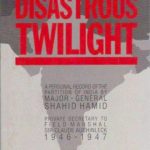By Ashok K Mehta
Although the new policy on drone strikes in Af-Pak has not been revealed, the big question is: Will Trump authorise drone strikes against Pakistan’s ‘good terrorists’ or will he act no different from Bush and Obama? US President Donald Trump’s Fort Myer speech was the ultimate on India coming out of the cold in Afghanistan. The US had always looked at India in Afghanistan through Pakistan’s prism. Although the new policy on drone strikes in Af-Pak has not been revealed, and if it is what Commanders have sought, it could be a game-changer.
According to the Bureau of Investigation (BOI), drone strikes in Pakistan were a part of the global war on terrorism 424 strikes killing 2,489-3,919 terrorists; 423 to 946 civilians and 239 to 319 children. These included decapitating strikes against terrorist leadership. Strikes commenced in June 2004 and the last was recorded on July 3. After 9/11, the US passed a legislation, the Authorisation for Use of Military Force (AUMF) to use all necessary and appropriate force in pursuit of those responsible for terrorist attacks against the US (and its citizens). In Pakistan, the US was targeting the Al Qaeda, the Taliban and the Haqqanis.
The rules of engagement (ROE) and command and control were clear. The target area had to be declared war zone/area of active hostilities. Pakistan fell under neither. A tacit understanding between General Pervez Musharraf and the US Generals allowed drone strikes in the Federally Administered Tribal Areas (FATA). Initially, the drone bases were inside Pakistan but after the Osama bin Laden episode, they shifted to Afghanistan.
When strikes were outside, in designated zones or entailed civilian casualties, for both, certification was required by highest military commander (in some cases the President himself) that the target posed imminent threat to the US and benefits from the strikes would be more than the risk of civilian casualties. Bulk of the US strikes outside recognised war zones, like Pakistan, were conducted by the Central Intelligence Agency (CIA). In Pakistan, all strikes outside the FATA were authorised by the President.
The Trump Administration has given more autonomy to the CIA and the military; and has reversed Obama policy to get the CIA out of drone strikes. A transactional Trump has asked questions like “while helping Pakistan to fight terrorists with US Coalition Support Fund and drone strikes what is the payback”? That is why US Senators have frequently said, “We are paying Pakistan to have our soldiers killed in Afghanistan by terrorists like the Al Qaeda, the Taliban and the Haqqanis (who have sanctuaries on Pakistan soil)”.
Pakistan has frequently said that these camps are inside Afghanistan and not on Pakistan territory. But Afghanistan National Security Advisor Hanif Atmar claimed that he had the coordinates of all the 32 enemy training camps in Pakistan. If the ROE is to change, Trump will have to authorise drone strikes beyond the tacitly agreed area of the FATA. Former US President Barack Obama had authorised three to four strikes, including the one on May 21, 2016, which took out Taliban supremo Akhtar Mansour on the Balochistan border and was the first strike conducted by the military in Afghanistan.
Since taking over, Trump has authorised at least two strikes in the ‘no go’ area on March 2 and June 13 against Qari Abdullah, an Afghan Taliban commander and Abu Bakar Haqqani, a Haqqani commander in Khyber Pakhtunkhwa. It will be instructive to look at the statistics of drone strikes in Pakistan.
The BOI records that the first strike in Pakistan was ordered by President George W Bush in June 2004. Between 2004-09, an aggregate of 51 drone strikes was conducted. When Obama took over, he took to drones as ducks to water. In his first term in 2009 alone, he had authorised 52 strikes, one more than Bush had used in four years. The strikes followed an interesting trajectory: Doubling to 128 strikes in 2010 and then steadily declining each year from 75 in 2011 to just three in 2016. Few know why.
The casualty figures show wide margins and the reasons are not clear. It is clear that drone strikes played a crucial role in reducing the terror attacks in Pakistan. Except in Khyber Pakhtunkhwa, Pakistan is virtually free of terrorist attacks by the Pakistan Taliban as their sanctuaries are now in Afghanistan. The legal justification for drone strikes was strongly defended by the Obama regime. Peacetime assassinations, which are conflated with targeted killings, have been banned by the US since 1976. 9/11 changed the rules with the AUMF. The United Nations Special Report on Targeted Killings defines it as: “Premeditated acts of lethal force employed by states in peace and unarmed conflict to eliminate specified individuals outside their custody”.
Employment by intelligence or Armed Forces of cruise missiles, drones (stand-off) is legally justified by Article 51 of the UN Charter Right to Self Defence. The US says it is in a state of armed conflict with the Al Qaeda and its affiliates. Bulk of drone strikes executed outside war zones were by the CIA, whereas in declared areas of hostility, it is by the military. Good Kill ironically is the name of a film which illustrates employment of drone strikes in Pakistan’s FATA conducted from CIA’s headquarters of Langley in Virginia. The film illustrates the dilemma of drone controllers with hands on the joystick who are not part of the United States Air Force. Some ask: “Why do we wear flying suits and query about their legal protection”? One cannot miss terms like ‘fly and fry’, ‘permission to prosecute (engage)’, ‘weapons hot’, ‘rifle (fire)’, ‘splash (hit)’. One of the drone controllers has turned into an alcoholic and dismissed for dereliction of duty, including saying “it is not a just war”.
Besides the statistics of drone strikes, their strategic decryption would show the following: The strikes bore limited deterrence. They were useful in taking out the Pakistan Taliban and few Haqqanis and were significant in reducing terrorist numbers and violence. Only three to four or five to six were conducted outside ‘agreed areas’. After the June 13 strike in Khyber Pakhtunkhwa, Pakistan Army Chief, General Qamar Bajwa called for intelligence sharing and said, “Unilateral action like drone strikes was counterproductive and against the spirit of cooperation”. US drone strikes in Pakistan have had no effect on the US war in Afghanistan. Why have drone strikes not targeted the Taliban and the Haqqanis during Bush and Obama eras even after the US declaring that it was in armed conflict with the Al Qaeda and its affiliates the Taliban and the Haqqanis?
As Trump likes to say, billions and billions of dollars have been spent in Afghanistan, but US stand-off attacks have not targeted the two terrorist groups who have killed nearly 3,000 US soldiers in Afghanistan. The billion dollar question is: After his dressing down of Pakistan, will Trump authorise drone strikes against Pakistan’s ‘good terrorists’ or will he act no different from Bush and Obama? Even US fears Pakistan nukes.
The writer is a retired Major General of the Indian Army and founder member of the Defence Planning Staff, currently the revamped Integrated Defence Staff.







